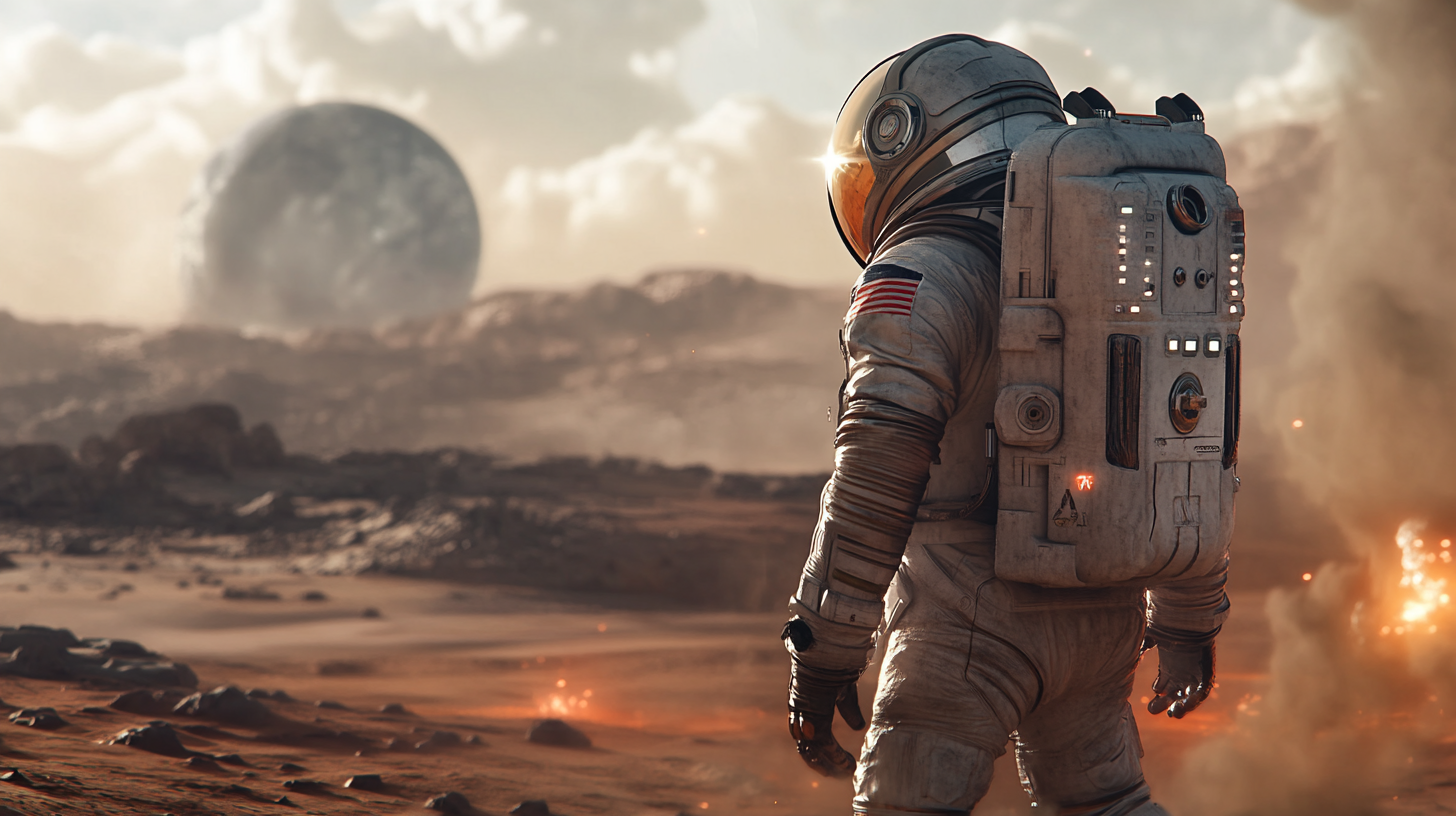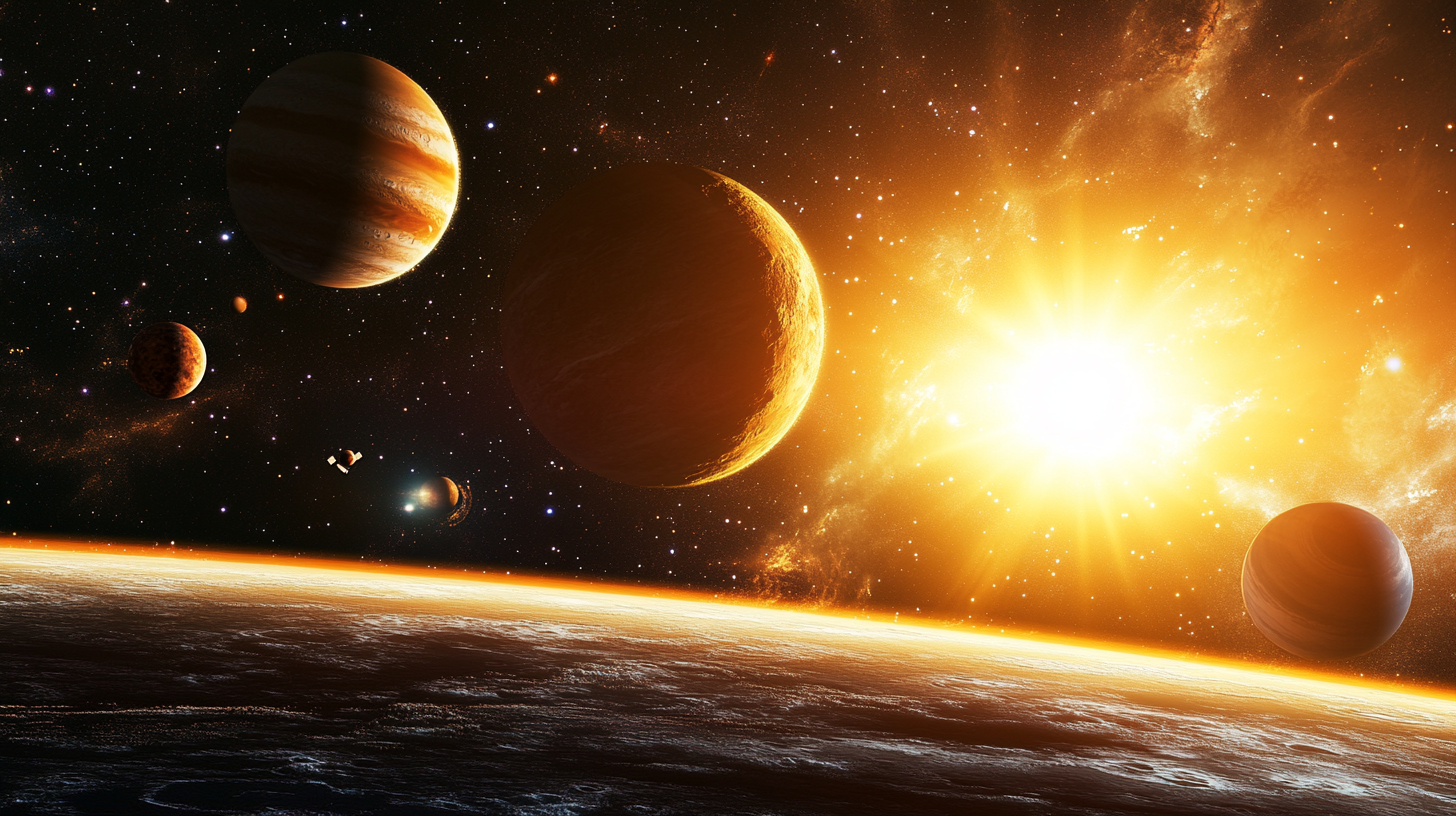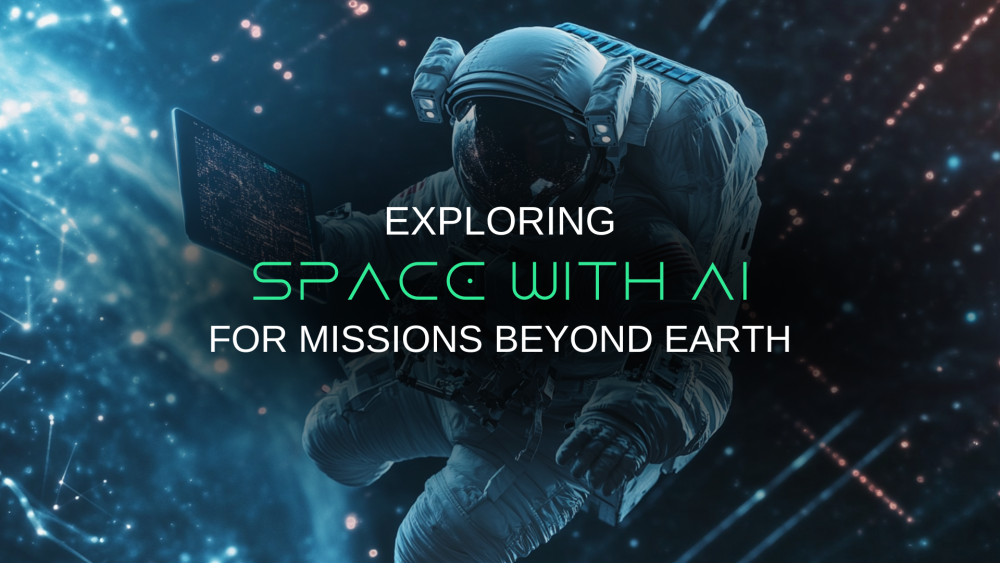Exploring Space with AI: Enhancing Missions and Discoveries Beyond Earth
Imagine a day in the not-so-distant future when a human crew lands on Mars. They step onto the red soil, not alone, but with an AI companion guiding every step of the mission. From choosing the safest landing site to analyzing potential hazards and monitoring the crew's health, AI will be the unseen partner that makes this extraordinary journey possible.
This might sound like science fiction, but AI is already playing a crucial role in space exploration. Take NASA’s Mars rovers, Curiosity and Perseverance, for instance. These rovers don’t just roam; they are equipped with AI to navigate challenging terrain, avoid obstacles, and make real-time autonomous decisions.
Current Applications of AI in Space Exploration
By taking over tasks that are too complex or time-consuming for humans, AI is helping space agencies like NASA and ESA push the boundaries of what’s possible beyond Earth. This section will explore the current applications of AI in space exploration.
1. Autonomous Spacecraft Navigation
One of the most critical challenges in space exploration is navigating spacecraft over vast distances with limited human intervention. AI-powered autonomous navigation systems can handle this task with precision.
NASA's Mars Rovers
Equipped with AI, NASA’s Mars rovers like Curiosity and Perseverance autonomously navigate the challenging Martian terrain. They use computer vision and machine learning algorithms to analyze their surroundings, avoid obstacles, and choose the most efficient paths. This advanced capability enables these rovers to explore Mars more effectively, even when communication with Earth is delayed by up to 24 minutes due to the vast distance.
2. Space Observation and Data Analysis
Satellites and space vehicles generate massive amounts of data that are too overwhelming for humans to process manually. That’s where artificial intelligence steps in. AI uses deep learning algorithms, data analytics, and image processing to analyze this vast data quickly. For example, AI can examine satellite images to detect important details like environmental changes, shifts in land use, or potential hazards. This technology helps gather essential information like tracking natural disasters, boosting agricultural productivity, and monitoring water resources.
ESA's Gaia Mission
The European Space Agency’s Gaia mission aims to create our galaxy's most precise 3D map. Gaia collects data on over a billion stars, resulting in a data deluge. AI algorithms process and interpret this data, identifying patterns and anomalies that might go unnoticed. These insights are crucial for understanding the structure and evolution of the Milky Way.

3. Rover and Satellite Operations
AI enhances the operations of rovers and satellites by allowing them to perform tasks autonomously, reducing the need for direct human control.
NASA's Earth Observing System
EOS consists of a series of satellites monitoring Earth's climate and environment. AI controls these satellites, enabling them to adjust their orbits autonomously, capture relevant data, and optimize their operations. This autonomous operation ensures that satellites respond quickly to changing conditions, such as sudden natural disasters.
4. Astronomical Observations
AI is revolutionizing how we observe and understand the universe. By automating the detection and analysis of astronomical events, AI can identify phenomena that would be difficult or impossible to detect manually.
Vera C. Rubin Observatory
Scheduled to be operational soon, the Vera C. Rubin Observatory will conduct a 10-year survey of the night sky, generating an unprecedented amount of data. AI is central to this project, particularly in identifying transient events like supernovae, which occur without warning. AI algorithms will sift through the data in real time, flagging significant events for further investigation.
5. Planetary Exploration
AI is critical in planetary exploration. It helps analyze the surface of planets and moons to identify potential landing sites, resources, and hazards.
Lunar Reconnaissance Orbiter
The LRO uses AI to analyze the Moon's surface, identifying safe landing sites for future missions. AI helps map the lunar terrain, detect potential hazards, and locate resources such as water ice, which is crucial for sustaining long-term human presence on the Moon.

6. Crew Health Monitoring
AI plays a vital role in monitoring the health of astronauts on long-duration space missions. By analyzing biomedical data, AI can predict and prevent potential health issues.
International Space Station (ISS)
AI systems monitor the health of the crew on the International Space Station by analyzing data from various sensors. These systems can detect early signs of health problems, such as changes in vital signs or unusual patterns in physical activity, allowing for timely interventions. This capability is especially important for missions beyond low Earth orbit, where immediate medical assistance is unavailable.
7. Resource Discovery
AI assists in the discovery and utilization of space resources, which is essential for supporting long-term missions.
Mars Resource Utilization
NASA is exploring using AI to identify and extract resources on Mars, such as water and ice. AI algorithms analyze data from satellites and rovers to locate these resources, which are crucial for producing oxygen and fuel and for sustaining human life on the planet.
8. Mission Planning and Optimization
AI optimizes mission planning by analyzing vast amounts of data and running simulations to find the best strategies for achieving mission objectives.
NASA's Artemis Program
The program aims to return humans to the Moon and eventually send them to Mars. AI plays a critical role in mission planning, helping to optimize every aspect of the mission, from launch windows to landing sites.
Running countless simulations, AI helps mission planners anticipate challenges and develop strategies to overcome them, increasing the likelihood of mission success.
Challenges and Ethical Considerations
Autonomy and Decision-Making
- Challenge: As AI systems gain autonomy, especially in deep space, they must make critical decisions without human input. Ensuring these decisions are ethical, safe, and mission-aligned is a major challenge.
- Consideration: Developing AI that balances autonomy with accountability will require rigorous testing, fail-safes, and transparent decision-making. Clear guidelines for human override will also be essential.
Human-AI Collaboration
- Challenge: The success of space missions depends on seamless human-AI collaboration. Astronauts must trust and work effectively with AI systems.
- Consideration: Training astronauts to collaborate with AI and designing AI with intuitive interfaces and clear actions will be key to building trust and enhancing teamwork.
Ethics of AI in Space Colonization
- Challenge: AI in space colonization raises ethical concerns, such as the treatment of AI entities, resource exploitation, and the impact on potential indigenous life forms.
- Consideration: Ethical frameworks and international agreements will be necessary to ensure responsible and sustainable AI use in space exploration and colonization.
The Road Ahead
The future of AI in space exploration is incredibly promising. AI technology will enable even more sophisticated missions, from fully autonomous spacecraft to long-term human settlements on other planets. AI will play a key role in overcoming the challenges of deep space exploration, making missions safer, more efficient, and more successful.
By working with humans, AI will help us unlock discoveries and expand our understanding of the universe. AI will be an essential partner in our quest to explore and thrive beyond Earth as we push further into space.





